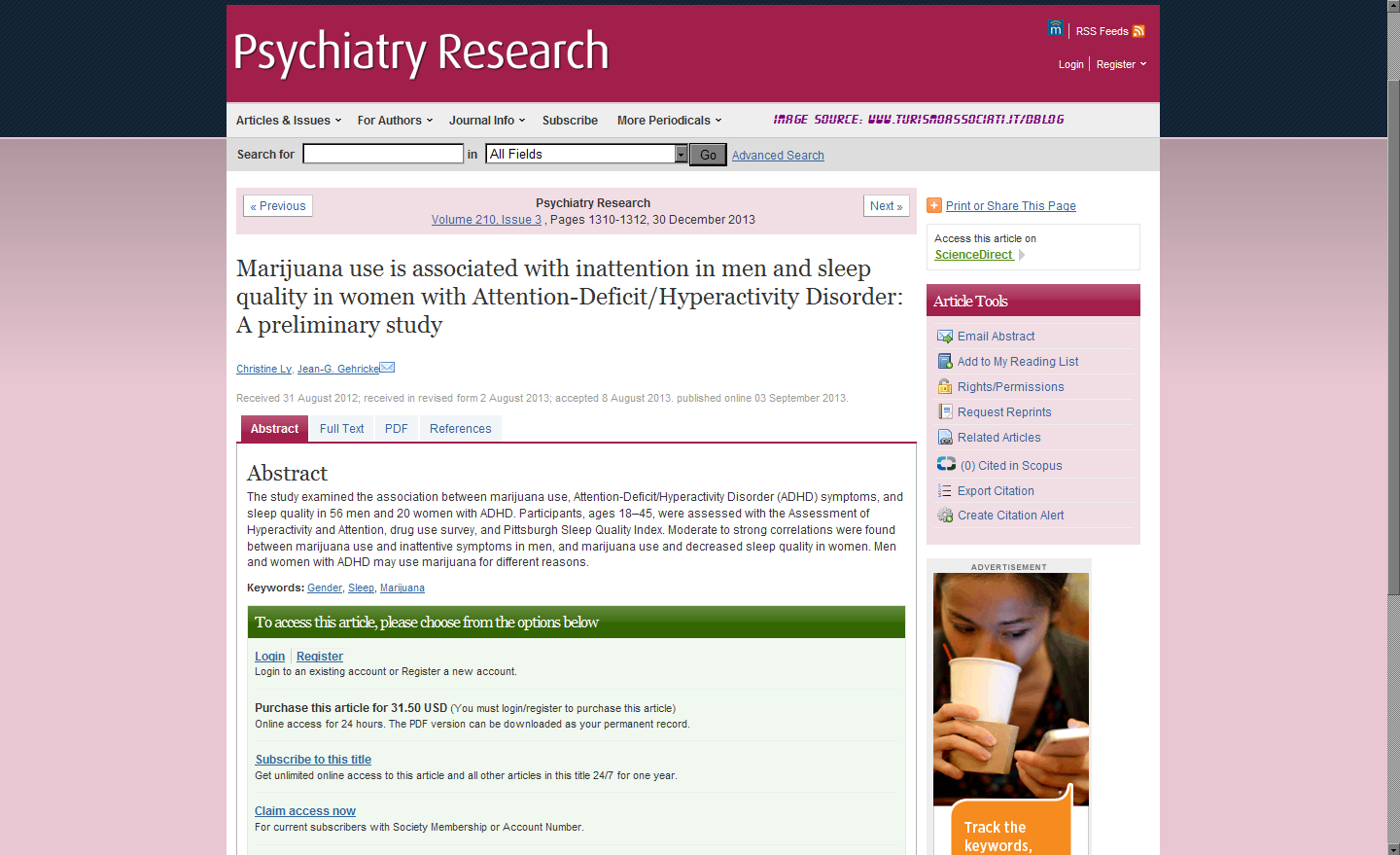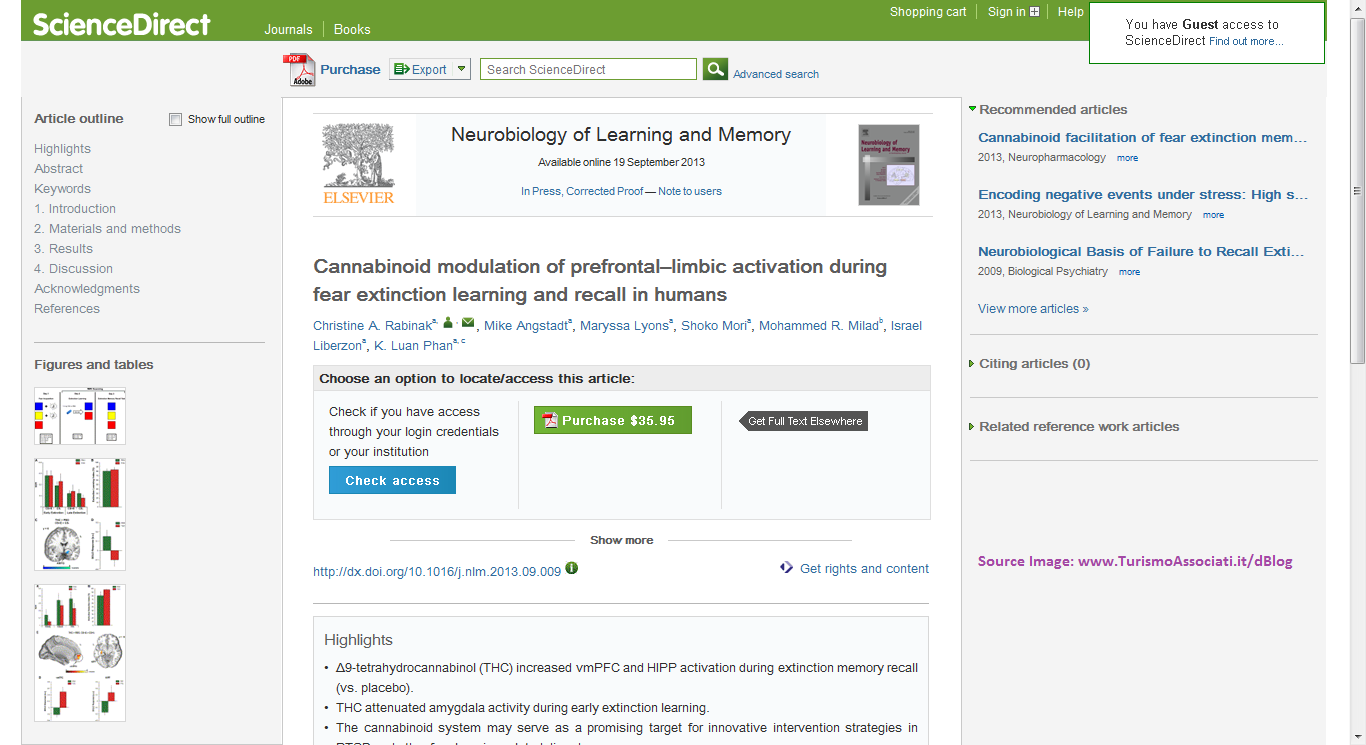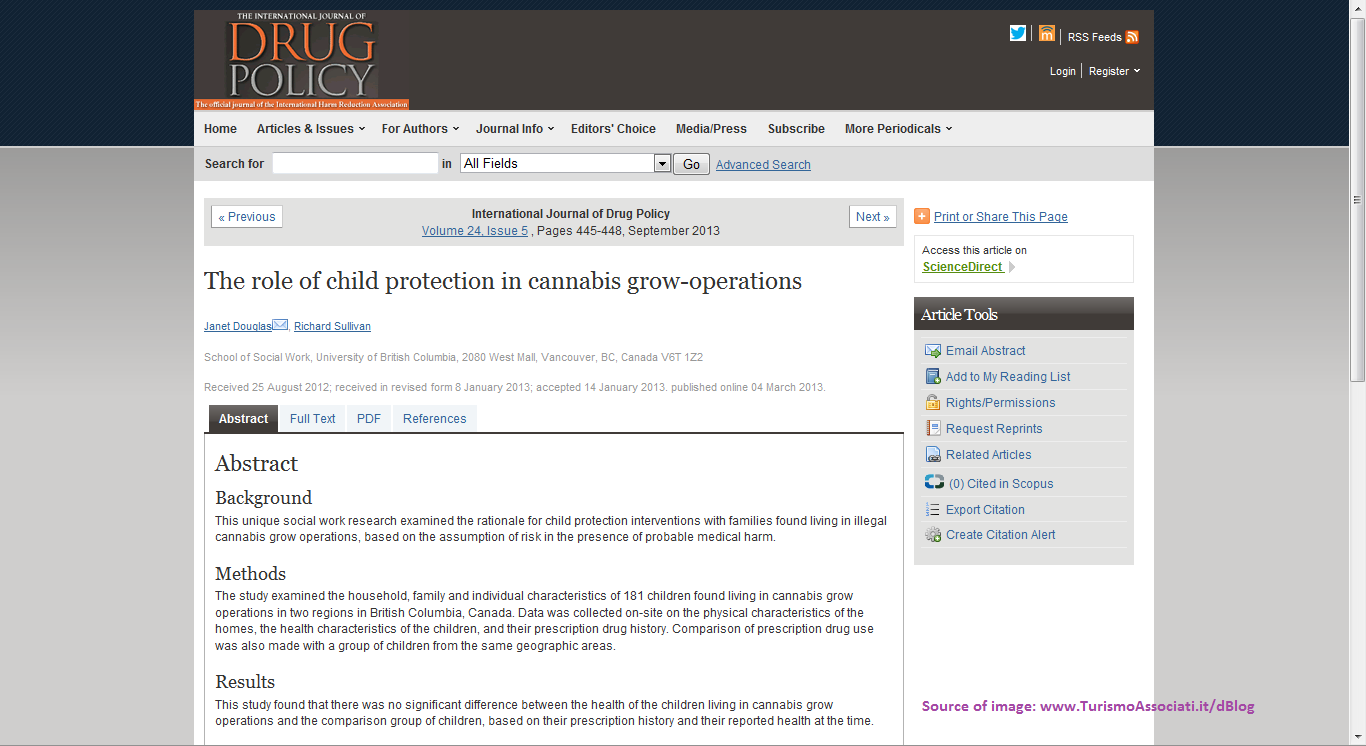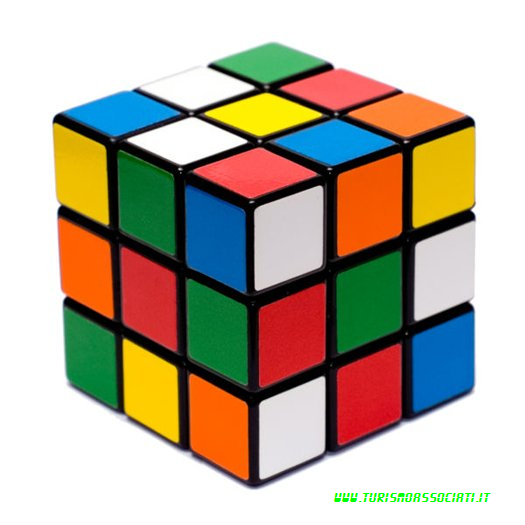|
Di seguito gli interventi pubblicati in questa sezione, in ordine cronologico.
People who smoke marijuana before bed often struggle to recall their dreams the next morning. Yet, when these individuals stop smoking, they tend to experience more vivid dreams than before.
Marijuana is known to affect various aspects of sleep, including activities that are not involved with dreaming. But there's a simple reason why marijuana users tend to have less dreams.

This phenomenon can be explained by how marijuana affects the sleep cycle, specifically a stage known as rapid eye movement (REM) sleep.
Marijuana and REM Sleep
The brain is most active during REM sleep and most dreaming is thought to occur during this stage. Numerous studies have shown that using marijuana before bed reduces REM sleep. Researchers believe this is why marijuana users report fewer dreams.
During the night, the brain cycles through 4 different stages of sleep, spending the most time in deep sleep (or slow-wave sleep) and REM sleep. The amount of time spent in these two stages is closely related. In fact, studies show that marijuana lengthens the time the brain spends in deep sleep, which leads to less REM sleep.
Ingesting THC or marijuana before bed also appears to reduce the density of rapid eye movements during REM sleep. Interestingly, less REM density has been linked to more restful sleep.
Most studies on marijuana and REM sleep have looked at the effects of THC. However, other compounds in marijuana may interfere with THC's effect on sleep. For example, CBD has been found to promote wakefulness compared to taking THC alone.
What Happens When Quitting
Regular users of cannabis experience an abnormal increase in REM sleep when use is stopped. This is called the REM rebound effect, which leads to longer and denser periods of REM sleep. The REM rebound explains why cannabis users often experience highly vivid dreaming when trying to quit.
The sleep disturbances that occur during cannabis withdrawal usually begin 24-72 hours after quitting and can persist for up to 6-7 weeks.
Interestingly, the REM rebound is not unique to cannabis use. Other substances that interfere with sleep, such as alcohol and sleep medications, can cause REM rebound too. What's more, people who are sleep deprived often undergo a rebound in non-REM sleep.
The rebound effect appears to be the body's way of coping with being deprived of certain stages of sleep.
The Importance of REM Sleep
While healthy people should avoid taking substances that alter their sleep, it's not clear whether the effect of marijuana on REM sleep is actually harmful. In fact, experts are still not sure why we need REM sleep.
On the other hand, deep sleep is believed to be the most important sleep stage for repairing and restoring the body. Likewise, studies show that when deprived of sleep, the brain prioritizes deep sleep over REM sleep.
While more research is needed, it's possible that the ability of marijuana to increase deep sleep, even at the expense of REM sleep, might turn out to be a good thing.
Source: LeafScience
Just over half of rheumatology specialists believe cannabis or cannabis-based medicines can help in the treatment of rheumatic conditions like arthritis, according to a survey by the Canadian Rheumatology Association.
The results were published last month in the journal BMC Musculoskeletal Disorders.
Of the 128 doctors that responded to the survey, 55% thought there was a role for cannabis or cannabinoids in treating rheumatic conditions. 45% said there was no role.

Despite the divide in opinion, the vast majority of respondents said they were unsure of how to prescribe cannabis.
Over 75% of respondents said they lacked confidence in their "current knowledge of the endocannabinoid system in health and disease." What's more, 90% of respondents said they would not feel confident writing a prescription that included dosing, frequency and method of administration.
Those that did feel confident recommending a dose offered 0.5-3 grams/day as a starting dose. A single dose per day was the most commonly recommended treatment schedule, with others suggesting 2-3 doses per day.
The lack of confidence among rheumatologists is concerning, conclude the authors of the survey, considering the widespread use of marijuana by patients with arthritis.
In 2013, federal data showed that more than half of Health Canada's 30,000 registered cannabis patients were using it to treat severe arthritis. Medical marijuana has been legal in Canada since 2001.
The authors conclude that the absence of human studies is likely a major factor in the lack of acceptance towards cannabis.
A survey by WebMD/Medscape earlier this year found a similar level of support (54%) for medical marijuana among rheumatology specialists in the U.S.
Source: LeafScience
Many people who use marijuana say that it helps relieve anxiety. On the other hand, there are just as many who report feeling more anxious after using marijuana. Although the exact details remain a mystery, a possible explanation may lie in the specific chemical make-up of cannabis.
As most marijuana users are aware, not all cannabis is the same. There are a wide range of strains available, and many are believed to have unique effects on their user.
What makes strains unique from one another is their active ingredients, also known as cannabinoids. Although clinical research is lacking, knowing the differences between strains and how they affect anxiety can be helpful.
THC vs. CBD

The two most common chemicals in cannabis are THC and CBD. Although most strains contain both compounds, levels of THC and CBD tend to vary from strain to strain. Interestingly, research shows that THC and CBD can have opposite effects on anxiety.
THC is responsible for the marijuana high and is also strongly linked to feelings of paranoia, especially when taken in high doses. This is because THC activates an area of the brain responsible for fear — the amygdala.
CBD, on the other hand, is believed to counteract the mind-altering effects of THC. What's more, studies have shown that when taken on its own CBD can lower anxiety in both healthy and anxiety-prone individuals.
Types of Cannabis
The reason why marijuana is often associated with anxiety may be because most plants are bred to be rich in THC. The way CBD and THC are produced within the plant causes strains with high THC to have less CBD (and vice versa).
High CBD strains have only recently become popular, due in part to growing awareness of the compound's medical effects. As a result, there's a strong chance that any marijuana you obtain will have more THC than CBD.
Other components in cannabis may also contribute to its effect on anxiety. Besides THC and CBD, cannabis contains over 60 different cannabinoids along with a variety of aromatic compounds known as terpenes.
Certain terpenes in cannabis have been found to possess anti-anxiety properties. Still, most of these chemicals are only present in trace amounts and little is known about their overall impact on marijuana users.
Avoiding Anxiety
Overcoming anxiety from cannabis could be as simple as reducing the amount of THC that you ingest. In fact, some studies suggest that THC at low doses can have an anti-anxiety effect.
Research conducted in animals shows that THC begins to raise anxiety levels only after a certain threshold is passed. Although it's hard to predict what your threshold might be, people who use cannabis frequently tend to have a higher threshold. This is because of the desensitization to marijuana, or tolerance, that develops.
For those specifically looking to treat anxiety disorders with cannabis, the best bet may be to find strains with high CBD content. A breakdown of a strain's THC and CBD content is often provided where the sale of cannabis is regulated.
Source: LeafScience
Just over half of rheumatology specialists believe cannabis or cannabis-based medicines can help in the treatment of rheumatic conditions like arthritis, according to a survey by the Canadian Rheumatology Association.
The results were published in the journal BMC Musculoskeletal Disorders.

Of the 128 doctors that responded to the survey, 55% thought there was a role for cannabis or cannabinoids in treating rheumatic conditions. 45% said there was no role.
Despite the divide in opinion, the vast majority of respondents said they were unsure of how to prescribe cannabis.
Over 75% of respondents said they lacked confidence in their "current knowledge of the endocannabinoid system in health and disease." What's more, 90% of respondents said they would not feel confident writing a prescription that included dosing, frequency and method of administration.
Those that did feel confident recommending a dose offered 0.5-3 grams/day as a starting dose. A single dose per day was the most commonly recommended treatment schedule, with others suggesting 2-3 doses per day.
The lack of confidence among rheumatologists is concerning, conclude the authors of the survey, considering the widespread use of marijuana by patients with arthritis.
In 2013, federal data showed that more than half of Health Canada's 30,000 registered cannabis patients were using it to treat severe arthritis. Medical marijuana has been legal in Canada since 2001.
The authors conclude that the absence of human studies is likely a major factor in the lack of acceptance towards cannabis.
A survey by WebMD/Medscape earlier this year found a similar level of support (54%) for medical marijuana among rheumatology specialists in the U.S.
Source: LeafScience
With a rising number of patients seeking a prescription for marijuana, clinicians are increasingly faced with the dilemma of prescribing a treatment that lacks support or recommending patients not use a medicine that could benefit them in the long-run.
Most, out of caution, end up choosing the second option.
"It's understandable that physicians might be reluctant to prescribe cannabis, because there is not a great deal of evidence about its effectiveness for many of the conditions we'd like to use it for, or about its safety," says Dr. David Juurlink, who heads the division of clinical pharmacology and toxicology at Sunnybrooke Health Sciences Centre, a University of Toronto teaching hospital.

"It's understandable that physicians might be reluctant"
But deciding not to prescribe marijuana may not be erring on the side of caution, he says.
Indeed, despite a lack of evidence for cannabis, there also isn't much evidence against it. At least compared to the variety of potent pharmaceuticals commonly prescribed for pain.
"We consider them evidence-based therapies, but they really haven't been studied and documented for many patients in a way that shows that their benefits offset their risks," notes Dr. Juurlink.
"All drugs have toxicities, whether they are plant based or come from pharmacies. It's the case that the direct toxicities of drugs for pain — like Oxycontin or Fentanyl or anti-inflammatory drugs — are simply much greater than the toxicities of cannabis."
Patients who suffer from severe pain are often treated with opioid-based medicines and non-steroidal anti-inflammatory drugs (NSAIDs). But the dangers of these drugs have become increasingly apparent and experts are urging for an end to their loose prescribing.
Recent data ranks Canada as the second highest per-capita consumer of prescription opioids, second only to the U.S. In Ontario, the rate of opioid-related deaths doubled between 1992 and 2010, now totaling about 550 deaths a year.
"You can make a case to prescribe cannabis"
NSAIDs, while less acutely fatal, are known to cause intestinal bleeding and kidney problems when taken too regularly.
But can medical marijuana be safely prescribed as an alternative to painkillers? Dr. Juurlink seems to think so.
"I think the point that physicians, and perhaps patients, can take away is that you can make a case to prescribe cannabis to select patients. Especially when the patient tells you that it works for them and when prescribing it allows the patient to reduce their use of other noxious drugs."
Source: LeafScience
THC, or tetrohydrocannabinol, is the most recognized ingredient in cannabis. It is best known for causing the high that you get from using marijuana.
As a result, THC has also caused the most controversy surrounding the plant's medical use, with many health professionals citing the high as a drawback.
However, while compounds like cannabidiol (CBD) have started to gain favor due to their lack of psychoactivity, decades of research have revealed a number of medical benefits unique to THC. Here is a list of 7 of them:
1. Pain Relief
One of the most common uses of medical marijuana is for pain relief. And as it turns out, THC is the ingredient in marijuana responsible for its pain-relieving effects.
Studies show that THC activates pathways in the central nervous system which work to block pain signals from being sent to the brain. Likewise, cannabis has been shown to be especially effective against neuropathic pain, or nerve-related pain.
2. PTSD
Post-traumatic stress disorder (PTSD) is another common reason to use medical marijuana. Interestingly, the high from THC is also associated with temporary impairments of memory.
While this may be seen as a drawback for some marijuana users, impaired memory is often therapeutic for those who struggle to forget painful memories, such as patients who suffer from PTSD. Recent studies confirm that oral doses of THC can help relieve a variety of PTSD-related symptoms including flashbacks, agitation and nightmares.
3. Nausea and Vomiting
THC has been available in pill form for treating nausea and vomiting in cancer patients since the 1980s.
Marinol, a pill containing synthetic THC, was the first THC-based medication to be approved by the FDA for this purpose. Since then, other THC pills have been developed and prescribed to patients undergoing chemotherapy, including a pill called Cesamet.
4. Appetite Stimulant
Along with its ability to reduce nausea, THC is known to work as a powerful appetite stimulant in both healthy and sick individuals. Similarly, Marinol and Cesamet are regularly prescribed to boost appetite in patients with cancer and HIV-associated wasting syndrome.
A number of studies conducted with Marinol suggest that THC can also stimulate weight gain in anorexia.
5. Asthma
Treating asthma may not seem like an obvious use for medical marijuana. But as it turns out, THC's ability to improve breathing in asthmatics is supported by research dating back to the 1970s.
Following trials that showed smoking marijuana could help calm asthma attacks, scientists tried (and failed) to develop an inhaler that could deliver THC. While the THC inhaler idea was ultimately abandoned, some say modern-day vaporizers might be the solution.
6. Glaucoma
Another benefit of THC recognized early on was its potential to relieve eye pressure in patients with glaucoma.

Likewise, after studies in the 1970s showed that smoking marijuana could reduce symptoms in glaucoma sufferers, scientists tried (and failed again) to develop a way to administer THC in eye drops. The idea proved too complicated due to the fact that THC is not soluble in water.
While some glaucoma patients rely on medical marijuana to this day, The American Glaucoma Society maintains the position that its effects are too short-lived (lasting 3-4 hours) to be considered a viable treatment option.
7. Sleep Aid
Many are aware of the sleep-inducing effect of marijuana, and research shows that THC is largely responsible. In fact, trials conducted in the 1970s found that oral doses of THC helped both healthy individuals and insomniacs fall asleep faster.
Interestingly, more recent studies suggest THC may also improve nighttime breathing and reduce sleep interruptions in those who suffer from a common disorder known as sleep apnea. Researchers are currently working to develop a THC-based medicine for treating the condition.
Source: LeafScience
This app is designed to engage children through a series of upbeat songs and colorful animations. All our songs will have lots of characters and these nursery rhymes will entertain kids all over the world.
DOWNLOAD LINK HERE.
*** Remember to press "..." to choose "Refresh" and "Go to Source" on the Video Details Area!
*** You can also use "..." to "Share", "Read" or "Pin to Start" an object of the application!

This app was created by ® TurismoAssociati.it/dBlog - Educate Yourself with Information © CC - Attribution - Non Commercial - Share Alike. Browse or download our free & certified applications for Windows Phone: LINK HERE.

>>>>> Remember to press "..." to choose "Refresh" and "Go to Source" on the Video Details Area!
>>>>> You can also use "..." to "Share", "Read" or "Pin to Start" an object of the application!
DOWNLOAD LINK HERE.
Scientists in the UK have now traced marijuana's ability to prevent the growth and spread of cancer to specific pathways found in tumor cells, known as cannabinoid receptors.
Dr. Peter McCormick of the University of East Anglia (UEA)'s School of Pharmacy explained the findings to Medical News Today:
"THC, the major active component of marijuana, has anti-cancer properties. This compound is known to act through a specific family of cell receptors called cannabinoid receptors."
The study, published last month in the Journal of Biological Chemistry, showed that injecting THC into mice with implanted tumors caused the cells to kill themselves — a process known as autophagy.

It also slowed the growth of tumors in breast and brain cancer cell lines.
While anecdotal reports have suggested that marijuana can fight cancer in some patients, Dr. McCormick notes that pharmaceutical companies have focused on developing synthetics and that the actual mechanisms remain "poorly understood."
But Dr. McCormick hopes his team's discovery will help speed along the development of new cancer treatments.
"By identifying the receptors involved we have provided an important step towards the future development of therapeutics that can take advantage of the interactions we have discovered to reduce tumor growth."
Previous research had already linked the anti-cancer effects of THC to the CB1 receptor, which is the most common cannabinoid pathway found in the body. CB1 receptors, when activated by THC, are also responsible for the marijuana high.
However, the group showed for the first time that CB2 receptors and GPR55 receptors are also involved, lending further evidence that marijuana can treat various cancers by acting through more than one pathway.
Still, Dr. McCormick believes patients shouldn't treat themselves with marijuana just yet.
"Cancer patients should not use cannabis to self-medicate, but I hope that our research will lead to a safe synthetic equivalent being available in the future."
It may not be only THC in the plant that fights cancer, though.
A 2013 study by a team at St. George's, University of London identified six different compounds in cannabis with anti-tumor properties including cannabidiol (CBD), cannabigerol (CBG) and cannabigevarin (CBGV).
Source: LeafScience
Beta-caryophyllene is present in the essential oils of various plants including rosemary, hops, black pepper and cannabis. Like most terpenes, beta-caryophyllene contributes to the unique aroma associated with plant oils.
But in 2008, German researchers discovered that beta-caryophyllene also acts as a cannabinoid by binding to marijuana pathways in the body.
Although some compounds like THC activate both cannabinoid pathways — CB1 and CB2 receptors — beta-caryophyllene specifically targets the CB2 receptor, which does not produce a high.
"The results also support the involvement of the CB2 receptor"
Interestingly, a new study conducted with mice suggests that beta-caryophyllene may be useful in treating anxiety and depression. The findings were published online in the journal Physiology & Behavior.
"The present study has clearly demonstrated the anxiolytic and anti-depressant effect of â-caryophyllene and its underlying mechanism in a CB2 receptor-dependent manner in rodents," wrote the authors, a team of scientists with the United Arab Emirates University.

"The results also support the involvement of the CB2 receptor in the regulation of emotional behavior and suggest that this receptor could be a relevant therapeutic target for the treatment of anxiety and depressive disorders."
Previous studies have also demonstrated a role of CB2 receptors in reducing anxiety and depression, the team adds.
On the other hand, CB1 receptors, which are more widely dispersed in the brain, are known to exert a ‘biphasic' effect when it comes to anxiety and depression. Studies show cannabinoids that target CB1 receptors can help at low doses, while high doses seem to make things worse.
A better understanding of beta-caryophyllene's properties, however, may help explain why cannabis users often cite relief of anxiety and depression as reasons for their use.
According to a 2013 report in Trends in Pharmacological Sciences, "epidemiological studies have indicated that the most common self-reported reason for using cannabis is rooted in its ability to reduce feelings of stress, tension, and anxiety."
Source: LeafScience
In 1974, Erno Rubik, a Hungarian architecture professor, invented the puzzle now famed as the Rubik's Cube.
The standard 3x3x3 version has colored faces made of 26 smaller colored blocks attached to an internal pivot.

The object is to rotate the blocks until each face of the cube is a single color.
The cube's popularity has sparked many competitions - some emphasize speedy solving, while others require participants to solve it blindfolded.
What did Rubik initially want to call his invention?
|